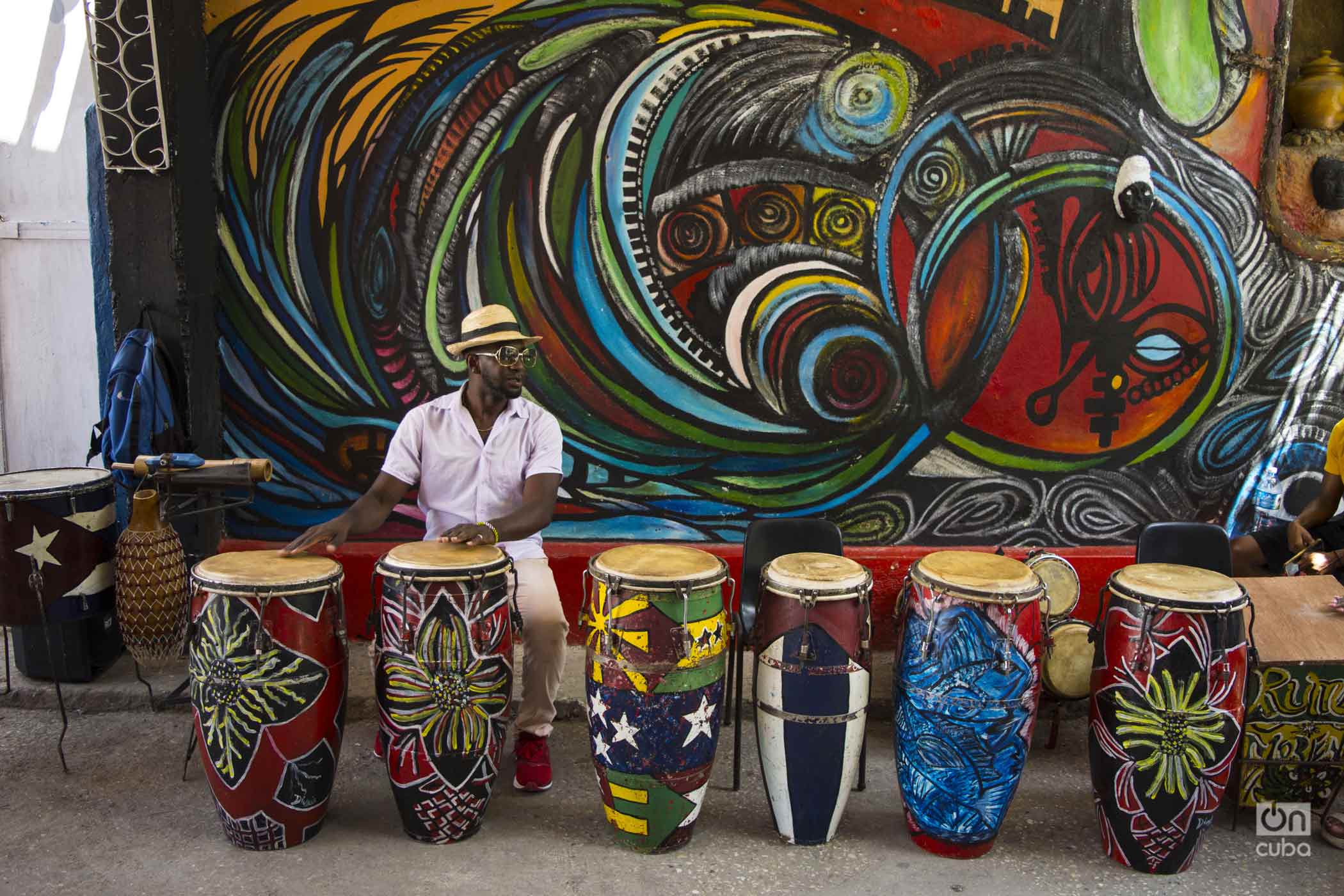
Those in the know say that to really experience Havana, a visit to the Callejón de Hamel is a must, at least once. Founded in 1990 in Cayo Hueso in Havana, the neighborhood has become a hub for Afro-Cuban culture and a reflection of its influences on the island.
Callejón de Hamel was an initiative of the sculptor Salvador González Escalona, who had taken some short drawing courses at the Escuela de Dibujo in Camagüey, and had done anthropology and ethnology research at the Casa de Africa, in Havana.
Salvador remembers that he was always encouraged by the idea of doing work that contributes to social transformation and respects our heritage. “At first, it wasn’t easy because of the scrutiny, but I never gave up trying to demonstrate the value of Cuban culture,” he tells OnCuba Travel.
This living museum is visited daily by Cubans and tourists from all over the world. They walk around to the sounds of drumbeats, and they are transfixed by the brightly painted, colorful walls with African religious motifs. Others delve into the African dances performed by groups of dancers who seem transplanted from Africa.
The Callejón de Hamel is a hive at dawn on Saturdays. A bus has just arrived at the corner, where the sound of a drum is heard. A tour guide exits the bus, followed by a diverse delegation of tourists. The guide introduces them to the place and they quickly disperse toward the adventure. One tourist, George Hula, approaches musicians who quickly step up their percussion. In a few minutes, Hula is the one beating the drums at full force, to the surprise of many.
“Several years ago, I took rumba lessons in Denmark with a friend who has a Cuban music and dance school. It was a great learning experience that showed me Cuba’s musical wealth. I think that was one of the reasons why I traveled to Havana for the first time,” this 41-year-old Dane told OnCuba Travel in perfect Spanish.
The tourists are scattered throughout the area. The group mostly stands in front of a kind of open-air gallery where Cuban paintings are exhibited. Then they shoot a barrage of questions about religion to a local man in his 70s, who explains the necklaces he is wearing, representative of several Yoruba deities. He answers each question with an ancestral wisdom. He talks about the arrival of Africans to Cuba, the meaning of the clothes he wears, and sends them off with some life advice.
Salvador González Escalona, the sculptor, chats with the visitors, explaining a bit about the origin of this “alley” and then he leaves to follow up on a project that is taking up his time in recent months. He walks near phrases sculpted in stone and the heat that the dancers give off, accompanied by the incessant drumming. A photographer takes some pictures and the artist thanks him with a bow of his hands.
This space is recognized nationally and internationally. In Cuba, Salvador has won several awards, but he says that the greatest recognition is that of the people, of his people. The Callejón has also provided work for several of the residents from this busy intersection near the central avenues of San Lazaro and Infanta.
Katherine is another tourist who arrived in the morning. She’s from Canada and talks animatedly with Hula, who already blends into the community. He shows her some of the casino steps he learned in Denmark, and tells legends of Afro-Cuban rituals.
Everyone bears the scorching midday heat as best they can, drying sweat from their foreheads and continuing to explore. In one corner, an artist has carved the representation of a religious deity in wood. Beside him, a man dances rumba while reminding me that bands such as Los Muñequitos de Matanzas and Clave y Guaguancó have played in the Callejón. “The good rumba,” he says, while waving colorful scarves.
The project has brought art closer to much of the neighborhood. There are paintings and music workshops for children and other events. One of the students, almost 15 years old, says that ever since he saw the Cuban film Esteban —which tells the story of a child from a humble neighborhood with a great aptitude for the piano— he wants to be like Chucho Valdés. Another, however, says that he only dreams of being behind the drum on steamy days in this community project. Both live with the certainty that in this enchanted alley, anything is possible.










